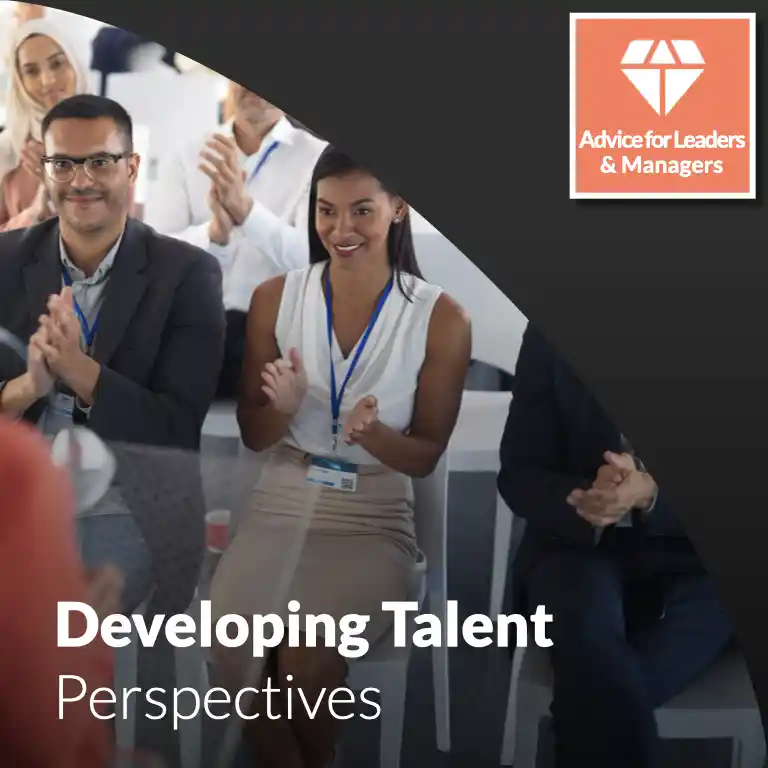Enjoy instant access to a scalable system of proven practices and execution-ready tools. Built to launch strategic HR programs 5X faster!
✓ Enjoy platform access
✓ Create your HR roadmap
✓ View open content in library
✓ Access dozens of practices:
⤷ The HR Strategy program
⤷ Explainers and deep dives
⤷ Supplemental guides
⤷ Insight articles
⤷ Weekly best practices
⤷ And more!
100% Free. No credit card required.
The role of leaders and managers in developing talent is more critical than ever, as they are responsible for creating environments where employees feel valued and motivated to grow. Effective leadership ensures that development strategies align with the organization's goals and foster a culture of continuous improvement. Providing regular and constructive feedback, enhancing leadership effectiveness, and closing skills gaps are essential to successful talent development. Leaders and managers must advocate for talent development and actively participate in creating and sustaining these initiatives.
Developing talent requires strategic planning, clear communication, and understanding individual and organizational needs. Leaders must also adapt to rapid changes in the business environment to understand the new skills required and effectively guide talent development. Additionally, by supporting employees' mental health and well-being, they create an environment where productivity and engagement can thrive, further enhancing the overall development of their teams.
To provide actionable insights on this crucial topic, we have gathered perspectives from thought leaders who have successfully led their organizations through developing talent. Their advice highlights the essential strategies and approaches leaders and managers can employ to ensure their teams are equipped to grow and succeed.
Ramona Shaw
Founder at Archova
Engaging leaders and managers in creating effective learning and development programs is essential for their growth and the organization's success. To do this effectively:
To ensure that leaders and managers personalize development plans to individual needs and preferences, it's important to develop strong self-awareness about their natural strengths, the tendencies they might overdo in their leadership roles, and the areas where they need further growth. Often, I notice that new managers are either overly doubtful or overly confident—neither of which is conducive to becoming an effective leader.
Leaders who are overly doubtful need to recognize and fully leverage their existing skills without hesitation, understanding that they have valuable contributions to make. On the other hand, overly confident leaders should strive for more humility and self-reflection to understand better how others perceive them and how their actions might unintentionally have a negative impact on their team. For instance, a decisive leader with strong opinions might inadvertently stifle a collaborative environment, discouraging team members from sharing their ideas or challenging the leader’s views. This can prevent the team from making important decisions that could lead to better outcomes. By balancing confidence with humility, leaders can create a more inclusive and dynamic environment where all voices are heard and valued.
Encouraging continuous learning and career growth among employees is critical for long-term success. Leaders and managers can do this by:
Kristi Learn, SHRM-SCP
Founder at ACTIVE HR HUB
Attracting, engaging, and retaining top talent is fundamental to creating an influential HR department while fostering a dedicated employee base and successful business. Employees become more committed and engaged when managers empower their team members to take ownership of their professional development. A personalized Professional Development Plan (PDP) provides the structure, accountability, and supportive conversations needed for this process. While a PDP can significantly advance the organization’s goals, it should be inspired and created by the employee, with the manager's role being to guide and support. A straightforward PDP, spanning 12-24 months, offers ample opportunity for substantial personal growth alongside meaningful business impact.
The PDP process includes five essential steps:
Regularly reviewing and updating the PDP is crucial to ensure it remains aligned with the employee’s evolving goals and the organization's changing priorities. These steps provide a consistent approach for managers to balance individual and business objectives. Well-structured PDPs support personal growth and drive organizational success, unlocking employees' full potential and leading to a more committed and high-performing workforce.
Gaining impactful advice from leaders and managers is crucial, but it is also essential to consider other aspects of development. This includes understanding the lessons learned in developing talent and recognizing the critical cultural elements needed to support this process. Together, these perspectives offer a comprehensive framework for organizations aiming to develop talent successfully.
The Learning and Development function is a highly sophisticated and direct contributor to business success. It can become a trusted and proactive performance improvement partner, with solutions created and adapted to the specific needs of targeted audiences at the individual, team, and organization levels.
“Performance Consulting” is the act of resolving workplace performance shortcomings by using a disciplined approach to learning needs assessments.
Design Thinking is defined as “an iterative process in which we seek to understand the user, challenge assumptions, and redefine problems in an attempt to identify alternative strategies and solutions that might not be instantly apparent with our initial level of understanding.”

Enjoy instant access to a scalable system of proven practices and execution-ready tools. Built to launch strategic HR programs 5X faster!